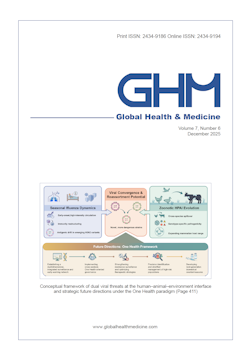Global Health & Medicine 2020;2(6):360-366.
Pancreas transplantation for type 1 diabetes in Japan: past, present and future prospects
Awata T, Kenmochi T, Tomimaru Y, Eguchi H, Ito T, Shimoda M
In Japan, the first pancreas transplantation was performed in 1984 from a brain-dead donor; subsequently, however, the concept of brain death became a social issue. Thereafter, the "Organ Transplant Act", which enables brain-dead transplantation, was enacted in 1997, and then revised in 2010 so that donation after brain death became possible only with the consent of the family. Under the recipient selection and registration system developed after the enactment of the "Organ Transplant Act", more than 400 pancreas transplants have been carried out at facilities certified for brain-dead pancreas transplantation in Japan. Of the 410 total cadaveric pancreas transplants performed by the end of 2019, the patient survival and pancreatic and kidney graft survival rates were considered to be comparable to those in the United States and Europe despite the high frequency of marginal donors. Minimally invasive allogenic islet transplantation came to be covered by national health insurance in 2020 following good outcomes of a recent trial. Furthermore, to overcome the serious donor shortage in Japan, development of xenogeneic islet transplantation and regenerative medicine using stem cells is in progress, with xenotransplantation using porcine islets appearing particularly promising.
DOI: 10.35772/ghm.2020.01069







